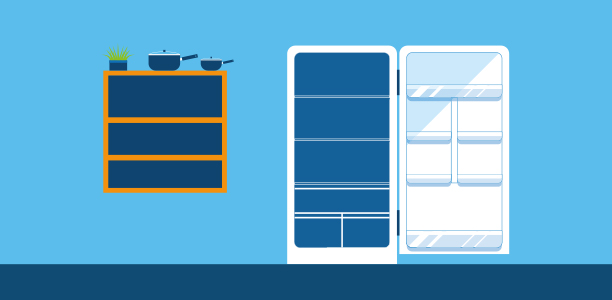Learn about where different foods are stored and why this is important for food safety
What Goes Where?
Learn about where different foods are stored and why this is important for food safety

- HWB 1-16a
- HWB 1-33a - I am becoming aware of how cleanliness, hygiene and safety can affect health and wellbeing and I apply this knowledge in my everyday routines such as taking care of my teeth.
- HWB 2-16a
- HWB 2-33a
- show suitable places for storing different foods
- develop an understanding of how to store different foods safely
Resources
- Food Cards
- interactive storage game
- Storage pupil worksheets
- Homelink sheet
Setting up
- select appropriate food cards for use
- set up the interactive storage game on the whiteboard
Activities
- open with a class discussion about different areas in the kitchen where food is kept, using food cards as a visual prompt
- play the interactive storage game - ask pupils to come up to the whiteboard to put the food away and talk as a class about why you store food in the fridge or the cupboard
- I-Spy game - pupils take it in turns to choose a storage area and think of a food item that would be stored there, saying “In my [e.g. fridge] I spy something beginning with …”, with other pupils taking turns at guessing the food item
- follow up worksheet – pupils draw storage area with an example of a food item that might be stored there
- write some sentences under the picture explaining why the food is best stored in that area
Homelink
Pupils use the 'Homelink sheet' at home and draw/write a least 2 things that you find in a cupboard and a fridge.
Cross-curricular links
Lit-writing
Assessment opportunities
SAY – Do pupils choose appropriate storage areas for given foods and give good reasons for choice?
Consider CfE Benchmarks, for example:
- Identifies where different types of food are stored.
Differentiation
Support
Pupils use support sheet to complete sentences about storage.
Challenge
Pupils can take their learning home, looking at where different foods are stored in their own kitchens.
